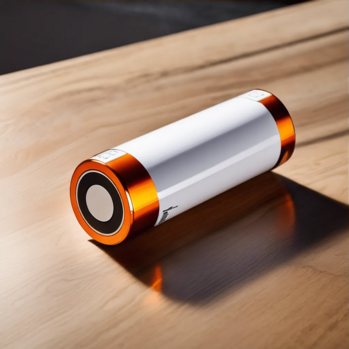18650 battery

Lithium-ion batteries of the 18650 format are cylindrical elements with a diameter of 18 mm and length of 65 mm. Thanks to high specific energy, long service time and stability of characteristics, such type of batteries is widely used in radio stations, unmanned systems, portable electronics, electric vehicles and stationary energy accumulation systems.
Constructive specifics and chemical composition
Cathode materials
Cathodes are made on the basis of different compounds:
LiCoO₂ (lithium cobalt oxide) – provides high energy capacity, but is limited in terms of thermic stability and price.
LiMn₂O₄ (lithium manganese oxide) – is remarkable for its thermic stability and available cost price.
LiNiMnCoO₂ (NMC) and LiNiCoAlO₂ (NCA) – multicomponent materials with an optimal composition of capacity, longevity and safety.
Anode materials
Anodes are mainly produced of graphite, which provides high electrical conductivity and the ability to repeatedly reversibly intercalate lithium ions. A perspective development for increasing the capacity of the cells is adding silicon.
Electrolyte and separator
Electrolyte is a mix of organic solvents containing lithium salt (usually LiPF₆). Microporous separator is placed between the electrodes to prevent short circuits and save ionic conductivity.
Manufacturing technology
Manufacturing process of lithium-ion batteries of 18650 format includes several stages:
- Producing the electrodes - application of a suspension of active substances to a metal foil (copper for the anode, aluminum for the cathode).
- Shaping a battery pack – spiral packing or laminating electrodes with a separator.
- Loading with electrolyte – process is being done in vacuum for uniform saturation.
- Forming and testing – starting cycles of charge/discharge to stabilize the characteristics and quality control.
Safety of usage
Modern 18650 batteries are equipped with systems of multi-level protection:
- Inbuilt thermal detectors
- Protection from overheat, overcharge, overdischarge and short circuits
- Schemes of management (BMS) provide monitoring of parameters of battery packs – voltage, temperature, current, cell balancing
The control of all critical parameters minimizes the risk of thermal rise and prolongs the longevity of the elements.
Ecological and social aspects
Lithium mining
Main deposits of lithium are concentrated in South America (Bolivia, Argentina, Chile) and Australia. The mining is followed with significant water consumption, which affects local ecosystems.
Decisions towards stable development
Methods of recycling are being developed, which allow to extract more than 90% of materials from used batteries. Special attention is being given to decreasing the carbon footprint and minimizing dependency on scarce resources.
Ethical questions of supply chain
An active work is being led to sustain the transparency of supply chain of materials and to improve working conditions on the mining organizations.
Application and development directions
Electric transport
Companies producing electric vehicles use these batteries due to their high energy density and reliable operation over a wide temperature range.
Portable electronics
They are widely used in radios, laptops, flashlights, electronic cigarettes and other compact devices.
Innovative developments
New materials and technologies
Research is underway to create anodes with the addition of graphene and the transition to solid-state batteries, which will increase energy density and improve safety.
Integration of artificial intelligence
Battery management systems use AI algorithms to analyze the state of cells, predict service life and optimize operating modes.
Conclusion
The 18650 format remains a popular solution in a wide range of high-tech applications due to its combination of high reliability, energy efficiency and compactness. Given the ongoing improvement of materials and management technologies, 18650 lithium-ion batteries will play a key role in the development of modern and sustainable electronics.
